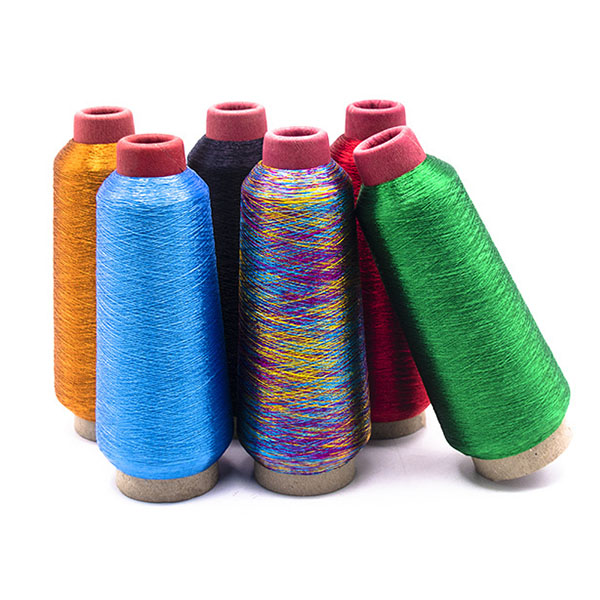Polyester is a kind of polymer fiber made by spinning, mostly refers to the fiber produced from ethylene phthalate as raw material, referred to as "PET" fiber.
Polyester Sewing Thread is the thread required for knitted clothing products. Sewing thread can be divided into three categories according to raw materials: natural fiber, synthetic fiber sewing thread and mixed sewing thread. Sewing thread uses pure polyester fiber as its raw material.
Polyester sewing thread refers to: sewing thread produced with polyester as raw material.

Common Models
The models of Polyester Sewing Thread in the industry are divided into: 202, 203, 402, 403, 602, 603 and so on.
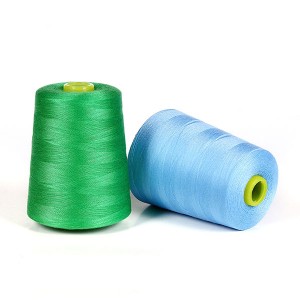
The thread is usually made by twisting several strands of yarn side by side. The 20, 40, 60, etc. in front of the sewing thread model all refer to the count of the yarn. The count of the yarn can be simply understood as the thickness of the yarn. The finer; the 2 and 3 behind the model number mean that the Polyester sewing thread is made of several strands of yarn.
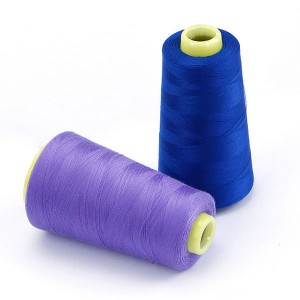
For example: 603 is made of 3 strands of 60 yarns twisted together. Therefore, the sewing thread twisted by the same number of strands, the higher the count, the thinner the polyester Sewing thread and the lower the strength; while the sewing thread twisted by the same number of yarns, the more strands, the thicker the thread and the lower the strength. bigger.
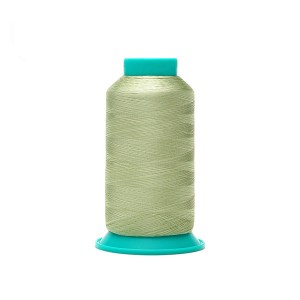
Line thickness comparison: 203>202>403>402=603>602 The line strength comparison is similar to the line thickness! Generally speaking: 602 thread is mostly used for thin fabrics, such as silk, georgette, etc. in summer; 603 and 402 threads are basically universal and are the most common sewing threads, and can be used in general fabrics, Thread 403 is used for thicker fabrics, such as woolen fabrics, etc. polyester sewing thread wholesale 202 and 203 can also be called denim threads. The threads are thicker and stronger.
Quality and Application
The comprehensive index for evaluating the quality of sewing thread is sewability. Sewingability refers to the ability of a best sewing thread to sew smoothly and form a good stitch under specified conditions, and maintain certain mechanical properties in the stitch. The pros and cons of sewability will have a direct impact on garment production efficiency, sewing quality and wearing performance. According to the national standards, the grades of sewing threads are divided into first-class, second-class and foreign-class products. In order to make the sewing thread have the best sewability in garment processing and the sewing effect is satisfactory, it is very important to select and apply the best sewing thread correctly. The correct application of sewing thread should follow the following principles:
(1)
Compatible with the characteristics of the fabric: the raw materials of the sewing thread and the fabric are the same or similar, so as to ensure the uniformity of its shrinkage rate, heat resistance, wear resistance, durability, etc., and avoid the appearance shrinkage caused by the difference between the Continuous Filament Thread and the fabric.
(2)
Consistent with the type of clothing: For special-purpose clothing, special-purpose sewing thread should be considered, such as elastic sewing thread for elastic clothing, and heat-resistant, flame-retardant and waterproof Sewing Threads Polyester for fire-fighting clothing.
(3)
Coordinate with the stitch shape: the stitches used in different parts of the garment are different, and the sewing thread Polyester should also be changed accordingly. Seam and shoulder seams should be firm, while buttonholes should be wear-resistant.
(4)
Unify with quality and price: The quality and price of sewing thread should be unified with the grade of clothing. High-grade clothing should use high-quality and Spun Polyester Thread Sewing, and medium and low-grade clothing should use ordinary quality and moderately priced sewing thread.
Generally, the labels of sewing thread kit are marked with the grades of sewing threads, the raw materials used, the fineness of yarn counts, etc., which help us to choose and use sewing threads reasonably. Sewing thread labels usually include four items (in order): yarn thickness, color, raw materials, and processing methods.
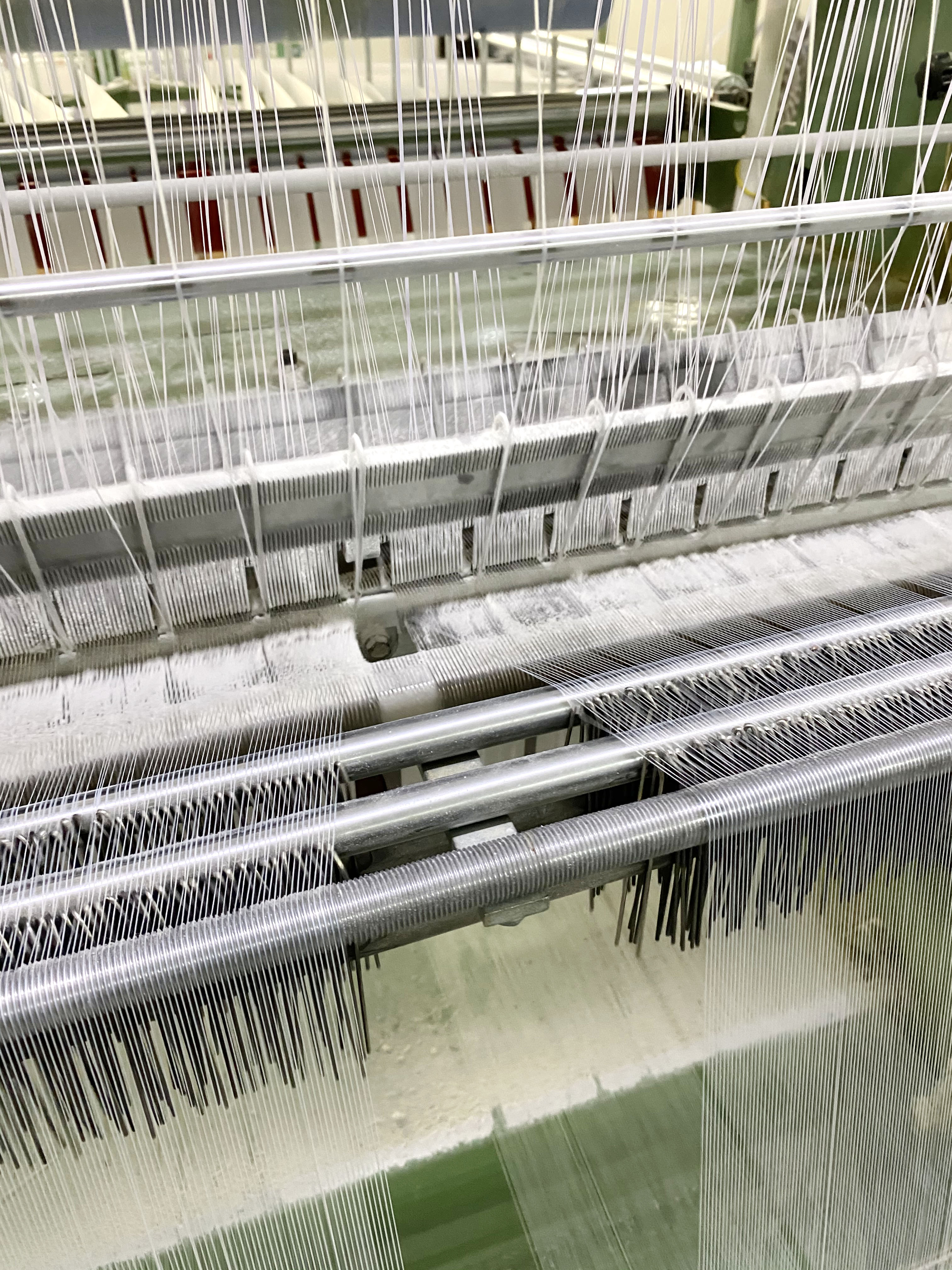
Name, Distinction
Polyester is also called high-strength thread, and nylon sewing thread is called nylon thread. However, the melting point is low, and it is easy to melt at high speed, block the needle eye, and easily break the thread. Due to its high strength, good wear resistance, low shrinkage rate, good moisture absorption and heat resistance, polyester sewing thread is resistant to corrosion, not easy to mildew.
and not moth-eaten, etc. It is widely used in garment sewing of cotton fabrics, chemical fibers and blended fabrics due to its advantages. In addition, it also has the characteristics of complete color and luster, good color fastness, no fading, no discoloration, and sunlight resistance.
The difference between polyester sewing thread and nylon sewing thread, polyester ignites a lump, emits black smoke, smells not heavy, and has no elasticity, while Nylon Polyester Thread also ignites a lump, emits white smoke, and has a stretchy smell when pulled Heavier.
High wear resistance, good light resistance, mildew resistance, coloring degree of about 100 degrees, low temperature dyeing. It is widely used because of its high seam strength, durability, flat seam, and can meet the needs of a wide range of different sewing industrial products.
How to Identify Polyester Yarn
How to identify rayon, real silk, and polyester sewing thread: rayon is shiny and bright, feels a little rough, and feels clammy and cold. If you hold it tightly with your hands and release it, there are many wrinkles, and there are still lines after being flattened. Use your tongue to pull out the silk Kneading it wet, the rayon is easy to break and break when it is stretched, and the elasticity is different when it is dry or wet. Silk is soft in luster, soft to the touch, and fine in texture. When rubbed against each other, it can emit a special sound, commonly known as "silk sound" or "silk sound". When you hold it tightly with your hands and then release it, the wrinkles are less and not obvious. The dry and wet elasticity of silk products unanimous. polyester sewing thread has strong reflective properties, high rigidity, rapid rebound, crisp, good wrinkle resistance, strong and strong, not easy to break
Regenerated Fiber
The chemical composition of regenerated fiber is the same as that of natural cellulose, but the physical structure has been changed, so it is called regenerated cellulose fiber. Such as viscose fiber, acetate fiber, cupro ammonia fiber, etc. my country mainly produces viscose fiber. Features: soft hand feeling, good gloss, good hygroscopicity, good air permeability, good dyeing performance (not easy to fade). The disadvantage is that the wet fastness is poor, that is, the water strength becomes lower.
Synthetic Fiber
Synthetic fiber features: good strength and wear resistance, crisp, not easy to deform, has the reputation of non-ironing, not easy to fade. The disadvantage is poor water absorption. Nylon Polyester Thread, features: high strength, good wear resistance, ranking first among fibers. The disadvantage is that the moisture absorption and air permeability are not good like polyester. Acrylic fiber, features: better than wool and silk fibers. But the wear resistance is poor. In addition, there are vinylon, Nylon Polyester Thread, spandex and so on.
Polyester Sewing thread chemical fiber has a wide range of uses in applications. In addition to traditional clothing, it is developing into industries such as automobiles, construction, indoor and outdoor decoration of buildings, and labor protection. The development direction of chemical fiber application has turned to non-clothing fields. The share of chemical fiber used in East Asia and non-garment in the total demand is increasing year by year, especially the excellent performance of chemical fiber, which is the best choice for special industrial fields and occupies a special and important position.
Sewing Thread Types and Usage Skills
In addition to sewing function, polyester sewing thread also plays a decorative role. The amount and cost of sewing thread may not account for a large proportion of the whole garment, but the sewing efficiency, sewing quality and appearance quality have a great relationship with it. What kind of fabric and what kind of thread are used under what circumstances are A most difficult thing to grasp. the
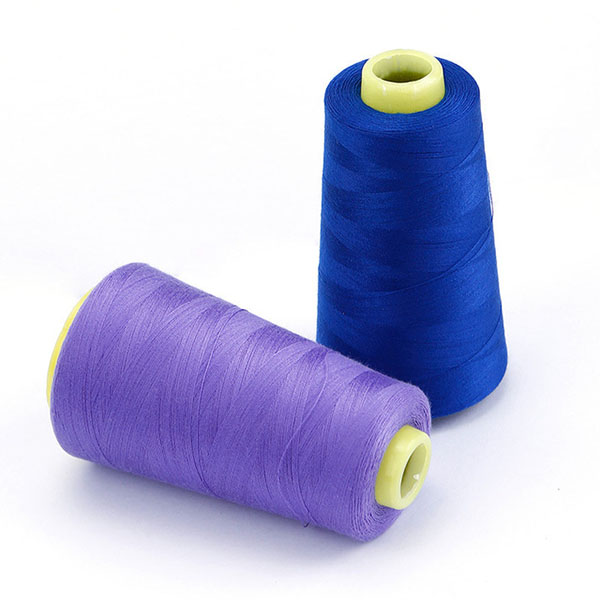
Cotton, Silk
The main components of natural fibers are cotton and silk. 100% Cotton Embroidery Thread has good strength and excellent heat resistance, suitable for high-speed sewing and durable pressing, but its elasticity and wear resistance are slightly poor. In addition to the ordinary soft thread, there are wax lines of cotton thread after sizing and waxing treatment and mercerized silk lines. Waxed light has increased strength and abrasion resistance, which reduces frictional resistance when sewing. Suitable for sewing stiff fabrics and leather fabrics. The silk light texture is soft and shiny, its strength has also been improved, and it feels smooth, and it is mostly used for medium and high-end cotton products. Since the post-processing of cotton sewing thread by relevant domestic equipment has not achieved the ideal toughness, the 100% Cotton Embroidery Thread is still easy to break in the impression. Therefore, the scope of cotton thread is not very wide. Silk thread is superior to cotton thread in terms of gloss, elasticity, strength, wear resistance, etc., but it is obviously at a disadvantage in terms of price. It is mainly suitable for sewing silk and high-end clothing, but its heat resistance and strength are lower than polyester filament thread. . Therefore, polyester threads in synthetic fibers are commonly used.
Polyester
Due to its high strength, low shrinkage, good wear resistance and heat resistance, polyester sewing thread is widely used in garment sewing of cotton fabrics, chemical fibers and blended fabrics. There are several kinds of polyester filaments, short filaments and polyester low elastic threads. Among them, polyester staple fiber is mainly used for sewing various types of cotton, polyester-cotton chemical fiber, wool and blended spinning, and is currently the most widely used sewing thread. Elastic polyester low-elastic silk polyester sewing thread and nylon strong threads are mostly used in the sewing of knitted garments such as sportswear, underwear, and tights. In addition, polyester and silk in mixed fibers are better than pure polyester in terms of flexibility, gloss and toughness, so they are used in a wider range. The use of ultra-thin fabrics naturally requires polyester and nylon.
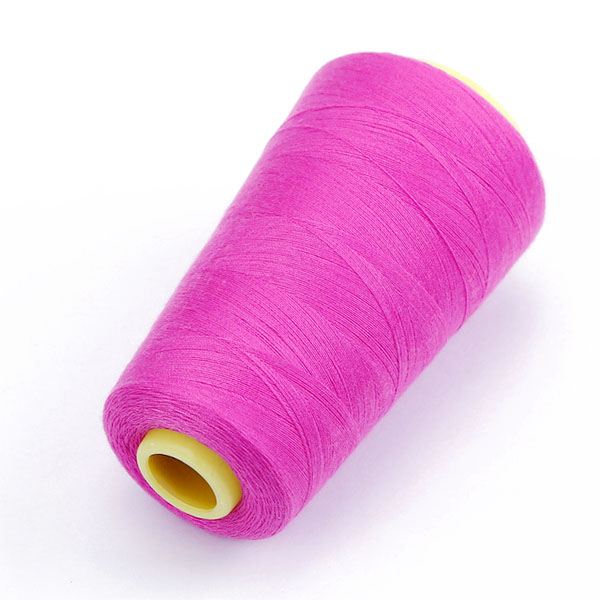
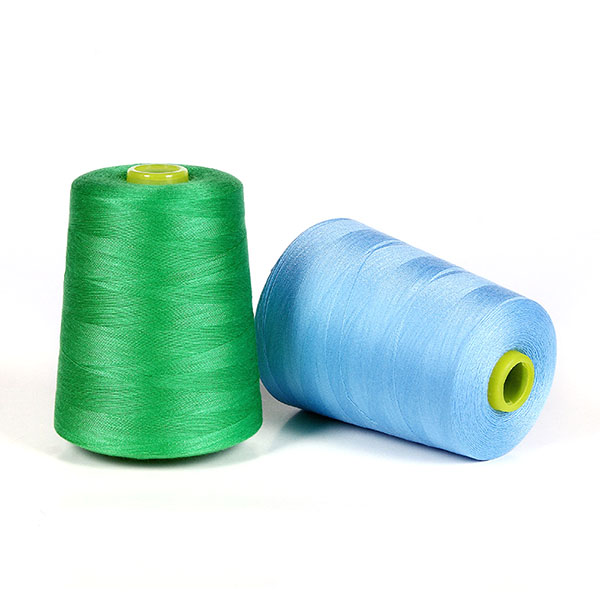
Nylon
Nylon Monofilament Sewing Thread has good wear resistance, high strength, bright luster, and good elasticity. Because of its poor heat resistance, it is not suitable for high-speed sewing and high-temperature ironing fabrics. Commonly used nylon filament thread is suitable for sewing chemical fiber garments and buttoning and locking buttons for various garments. The scope of application of nylon and nylon monofilament is for some elastic fabrics, that is, fabrics with relatively high tension. They are mostly used for cutting edges, trousers, cuffs and buttons in manual operations of clothing. In addition, they can be used for decorative ropes such as women's clothing. Belt buckles, cuff stops and hem topstitching for Chinese garments.
Blended yarns are mainly polyester-cotton blended and core-spun yarns. Polyester-cotton thread is made of polyester-cotton blend, the ratio is about 65:35. This kind of thread has better wear resistance and heat resistance, and the thread quality is soft. It is also suitable for sewing and overfacing of various cotton fabrics, chemical fibers and knitting. The outside of the core-spun thread is cotton, and the inside is polyester. Because of this structure, the core thread is strong, soft and elastic, and has low shrinkage. It has the dual characteristics of cotton and polyester and is suitable for high-speed sewing of medium-thick fabrics. These kinds of Nylon Polyester Thread also have broad potential for use.
Gold wire, Silver wire
Silk decorative thread is characterized by bright colors and more elegant and soft colors; rayon spun polyester sewing thread manufacturers is made of viscose, although the gloss and feel are good, but its strength is slightly inferior to that of real silk. In addition, the decorative effect of gold and silver lines has been paid more and more attention. Gold and silver threads, also known as craft decorative threads, are obtained by coating polyester fibers with colored coatings. Patterns, topstitching and partial decoration for Chinese clothing and fashion.
